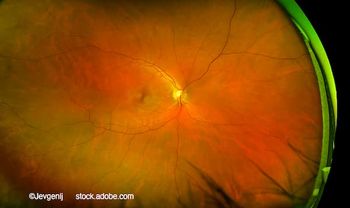
Tell-tale conjunctival hemorrhages
In a story that is a tragedy in so many ways, Jeffrey Epstein was accused of being a serial pedophile, allegedly luring underage females into situations in which they engaged in sex with Epstein and his famous friends.
Placed in a high-security federal detention center after his arrest and while under “suicide watch,” a series of incredible events ensued, according to news reports. He allegedly was not watched.
Against policy, he was left alone in his cell, and some of the video cameras that should have monitored him were inoperative and the videotapes from other cameras were lost. He was eventually found dead. The errors and/or negligence surrounding this death of one of the highest-profile prisoners in this country quickly led to conjecture as to foul play.
Related:
Family members, questioning the government’s conclusion that the death was the result of suicide, retained the services of a forensic pathologist. Michael Baden, MD, has challenged the official verdict of suicide, and interestingly (to me as an ophthalmologist) his reason for doing so has to do with the postmortem examination of Epstein’s eyes.
According to Dr. Baden, subconjunctival hemorrhages in the body make it more likely that the prisoner was a victim of strangulation and less likely that he hung himself in his cell.
I had never been aware that such hemorrhages could be helpful in determining cause of death. This really is a thing. The forensic literature points to conjunctival and facial petechial hemorrhages as hallmarks of asphyxial deaths:
“Consensus in the literature suggests that their pathogenesis is related to the combined effects of increased cephalic venous pressure and hypoxia damage to endothelial cells. Despite the common knowledge that they are neither predictable findings in all asphyxial deaths nor rare in natural, non asphyxial deaths, the belief persists that petechiae are corroborative evidence of asphyxia.”1Related:
Among 5,000 consecutive autopsies by the medical examiner in Dade County, Florida, conjunctival petechiae were noted in 227 (4.5%). These small hemorrhages were most frequently observed in those who died of natural deaths, followed by those who died from asphyxia, head injury, and central nervous system disorders. The incidence of conjunctival petechiae in victims of “homicidal asphyxiation” was 78%.2
Cardiopulmonary resuscitation has also been suggested as a possible cause of these hemorrhages.
Also by Dr. McConnell:
Twists and turns
My perspective-as someone who is not a forensic pathologist but has read some of the literature-is that the presence or absence of these conjunctival hemorrhages is not sufficient to determine cause of death or clearly distinguish suicide from homicide. It also makes more sense to me that these hemorrhages are more likely to be the result of mechanical vascular phenomena rather than due to some sort of “hypoxia damage” to endothelial cells in the last few moments of life.1
All the data do certainly point to the knowledge that can often be gleaned by a careful examination of the ocular (conjunctival and retinal) microvasculature.
Given the twists and turns in this sad saga and the high profile of many of those implicated as having been involved in sordid activities, it is unfortunate that conclusive answers may not be forthcoming.
References:
Ely SF, Hirsch CS. Asphyxial deaths and petechiae.
J Forensic Sci. 2000;45:1274-1277.
Rao VJ, Wetli CV. The forensic significance of conjunctival petechiae. Am J Forensic Med Pathol. 1988;9:32-34.
Newsletter
Don’t miss out—get Ophthalmology Times updates on the latest clinical advancements and expert interviews, straight to your inbox.



















































.png)


